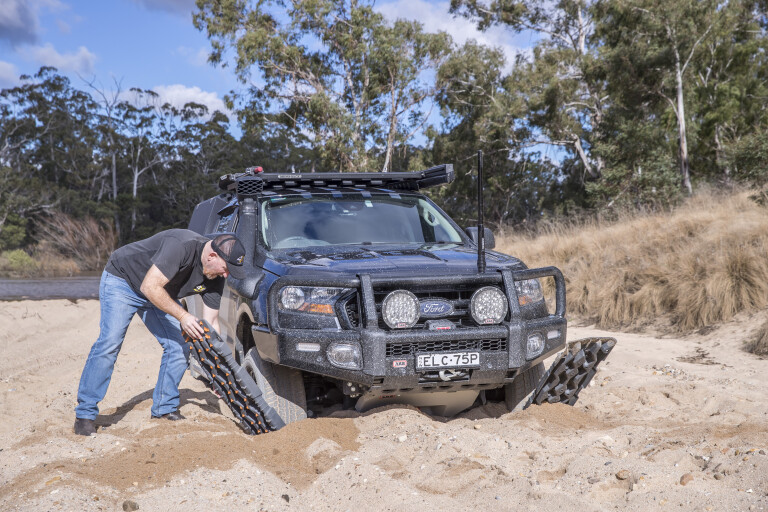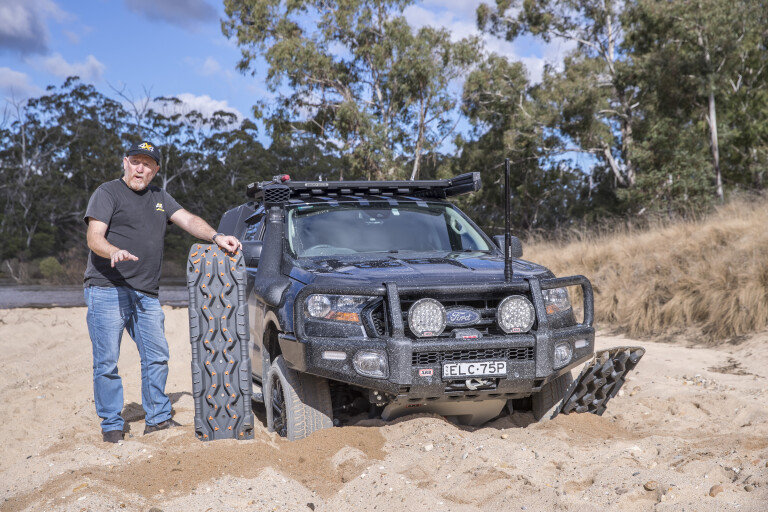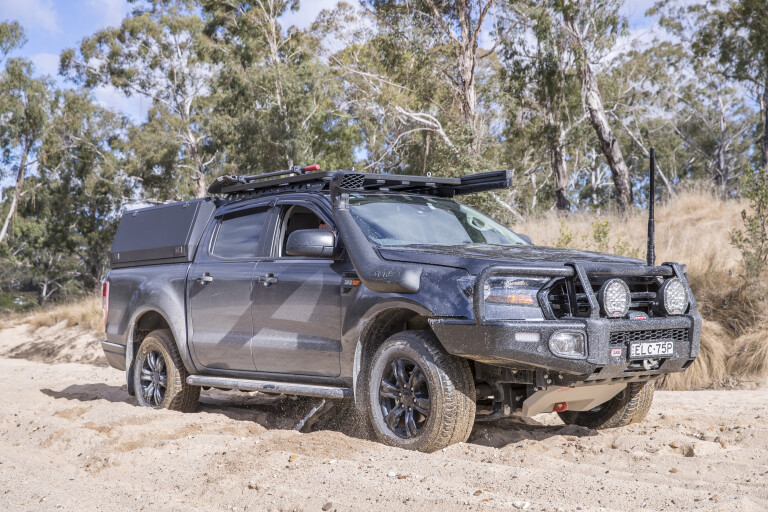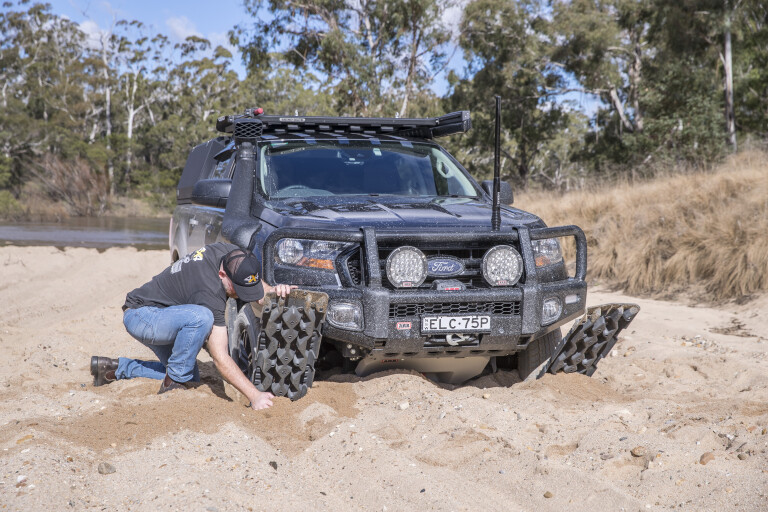
If you ever go off-road driving by yourself, you’d be mad not to carry at least one pair of recovery boards with you; they are, without a doubt, one of the most effective vehicle recovery tools you can carry in your 4x4. And not only are they effective, they are also affordable and easy to use.
Recovery boards are nothing new and have, in fact, been around for as long as the wheel itself. In its most basic form, a recovery board is simply a flat object such as a piece of wood that can be wedged underneath the wheel of a stuck vehicle – whether that be a wheelbarrow, a horse-drawn cart, a car, a truck or, more relevant to us, a four-wheel drive – to get it out of its stuck situation.
Recovery boards have developed over the years from lumps of wood to lengths of steel or aluminium, and interwoven bits of rubber or rubber mats. Prior to the development of modern recovery boards, the most common type used for vehicle recovery since WWII were manufactured from aluminium, due to their combination of strength and light weight, and these were commonly referred to as sand ladders.

But sand ladders have their drawbacks; they are bulky and inflexible, and as they have a smooth surface, they don’t allow tyres to gain easy purchase.
Four-wheel drive guidebook author, Brad McCarthy, developed the first ‘modern’ recovery board manufactured from engineering grade reinforced nylon. Called MaxTrax, he launched the product in 2005 after four years of development. His inspiration? Researching for a book, Brad found himself bogged on a remote beach in Queensland; he spent six hours recovering his vehicle with a hand winch, and afterwards he thought to himself, “There’s got to be an easier way.”
When launched, MaxTrax had many unique features that made it more effective for vehicle recoveries than previous devices such as sand ladders. MaxTrax featured large cleats so tyres could gain purchase; it had handles so it was easy to grip; it had a shovel shape at each end so it could be used to remove debris from around tyres and under vehicles; it was stackable for easy storage; and it was light.

Since MaxTrax was launched, several other companies have developed similar recovery boards also manufactured from reinforced nylon, including TRED, Exitrax and others. Each has a unique design and features, but all are essentially designed to function in the same way that MaxTrax does.
Since the first MaxTrax, Brad McCarthy has further developed the product, and the latest incarnation is called MaxTrax Xtreme, which features 88 replaceable anodised alloy teeth.
They might not be designed for it, but recovery boards have several other handy uses other than getting your vehicle out of a bog: they can provide a handy, stable base for a jack; they can be used under trailer jockey wheels; they can be used as bridging ramps; they can be used as traction aids on steep, slippery climbs; they can aid in turning a vehicle when winching by placing them under the steering wheels; and, of course, they can be used as a shovel around the campsite. We’re sure there are plenty of other uses for recovery boards that we haven’t even considered.

HOW TO USE RECOVERY BOARDS?
Recovery boards can be used in various off-road situations, but the most common usage is when you become bogged in sand or mud.
In the accompanying video, we used the example of a vehicle bogged in sand, but when bogged in mud, the recovery process is pretty much the same, just messier. Here’s how you do it …
First, you’ll want to make sure you’re running the correct tyre pressures for the off-road driving situation you’re in. As well as allowing the tyres the best chance to gain traction in off-road terrain, lowering pressures also allows them a better chance of gaining traction on the recovery boards themselves, so if you haven’t already, drop tyre pressures to give you the best chance of getting out … with minimal effort.

The next step is to shovel away any built-up debris (sand or mud) from in front of the vehicle’s tyres, at both the front and rear. You should also shovel away any built-up debris from in front of the vehicle. If you have a long-handle shovel, this is the best tool for the job, but if not, you can use the shovel end of the recovery board to do this task. You want to dig quite deep in front of the tyres so you can wedge the recovery boards under them as far as possible.
Some recovery boards are the same at each end, while others such as TREDs have a shovel end and a ramp end. Make sure you wedge the ramp end under the tyres as far as possible so the tyres can gain purchase on the cleats (or lugs) that stick out from the top of the boards. If you’re only using two boards, you’ll want to wedge them under the front tyres. If you have four boards, use them – it will make the recovery process even easier.
Once the recovery boards are in place, you’ll want them sticking up at about a 45-degree angle. To achieve this, you might have to pack some sand or mud under the boards to help support them. The reason you want the boards poking out at a 45-degree angle is that you essentially want to drive up and over the boards, lifting the vehicle out of its stuck predicament.

Once the recovery boards are in place, make sure your vehicle is in low-range first gear before driving forward. Go easy on the throttle and, with any luck, the vehicle will simply drive up the boards and out of its predicament. Don’t apply too much throttle or be tempted to go too fast, because any wheelspin can rip the cleats (or lugs) off the top surface of the recovery boards. Once the vehicle has lifted out of its situation and is clear of the recovery boards, you can then apply more throttle if necessary to build and maintain momentum until you are out of strife.
If the vehicle bogs down again once it has cleared the recovery boards, simply repeat the recovery process over again until you have reached solid ground. If you have several recovery boards available to you, you can lay out a track on which you can hopefully drive to solid ground.
The last step? Make sure you remember to grab your recovery boards once your vehicle is out of strife, whack them against each other to shake off any loose sand or excess mud, and then secure them to your vehicle. There are plenty of products on the market designed specifically for mounting recovery boards to your vehicle – up on a set of roof racks, on a tailgate-mounted spare tyre or even directly to a ute canopy – so there’s really no excuse for leaving them at home the next time you go four-wheel driving.

TRAINING
As with any vehicle recovery method, the best way to learn how to safely use recovery equipment is by attending a nationally recognised training course, either operated by a private company or through an accredited 4x4 club.
DOs
• Always carry them when off-road driving
• Lower tyre pressures to suit conditions
• Shovel around tyres and vehicle to remove debris
• Wedge boards under tyres as far as possible
• Have boards poking out at 45-degree angle
DONT's
* Attempt recovery without shovelling first
* Stow recovery boards where you can’t access them
* Don’t use too much throttle and spin tyres
* Forget to grab your boards before driving off
* Leave them unlocked on your roof rack

COMMENTS